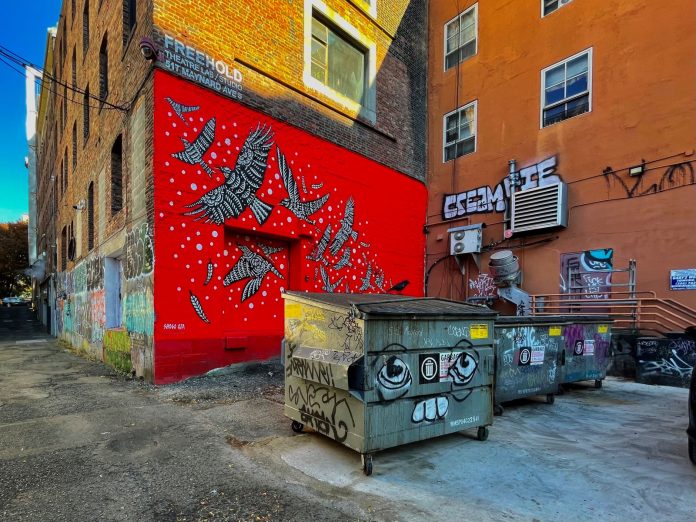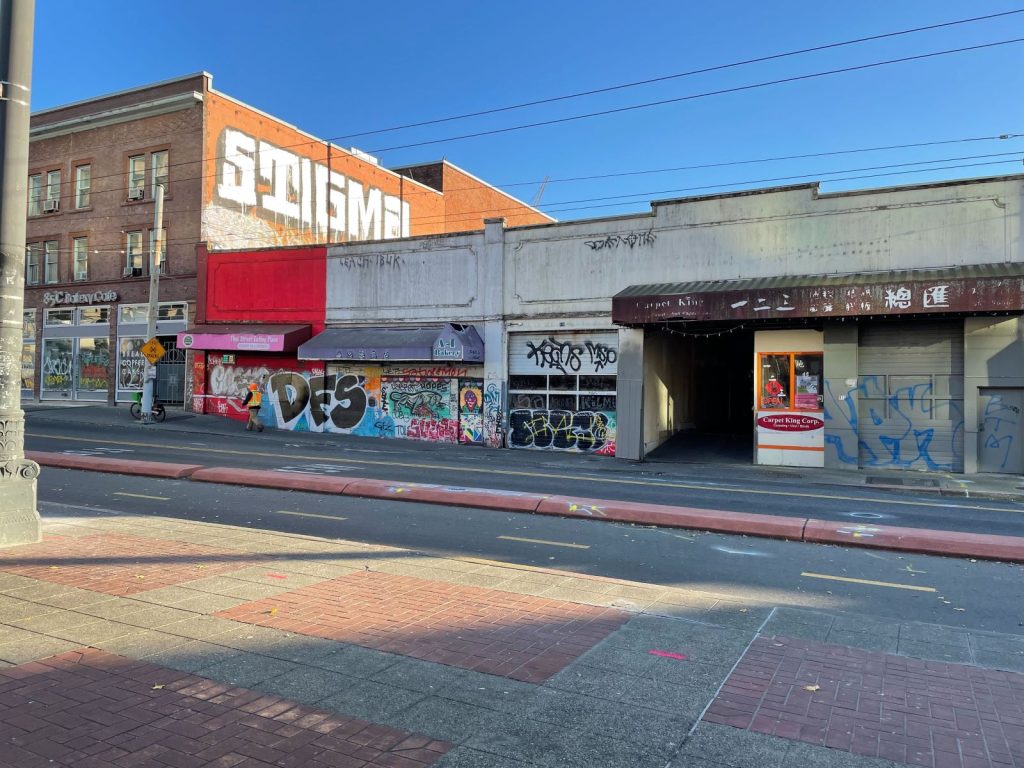Last month, Mayor Harrell unveiled his definitive anti-graffiti plan, with a focus on both graffiti removal and allowing artists to create legally. The mayor’s office estimates the price tag at around $944,000, though a close reading of their proposed budget shows it will likely be more. This increase would be on top of the $2 million already included for graffiti abatement.
This plan comes at the same time as city officials undertake a concerted drive to tighten the city’s budget to close a two-year shortfall of over $200 million
On Monday, as part of that drive, the city council struck down the requested $1.2 million increase for Seattle Public Utility’s Graffiti Rangers. The rest of Harrell’s plan remains in the city budget, meaning the city will still spend hundreds of thousands in new funding on anti-graffiti measures. Much of the plan’s cost is not specified in the mayor’s budget proposal, but what is specified tells a clear story about the mayor’s priorities.
To calculate the true cost of the mayor’s proposal we can look at its six pillars.
- Implementing Best Practices to Increase Abatement
- Increased Assistance to Reduce Graffiti on Private Property
- Many Hands Art Initiative
- Enhanced Volunteer Programming and Coordination
- New Approaches to Enforcement
- Continued Collaboration with the Washington State Department of Transportation
The plan’s first pillar is its most opaque, yet its most consequential. Harrell proposes increased funding for SPU’s Graffiti Rangers, as well as budget increases to “improve interdepartmental coordination across City departments involved in anti-graffiti work.”
The proposed $1.2 million for SPU, dedicated to the hiring of two new painters and one new graffiti executive, was blocked by the city council on Monday.
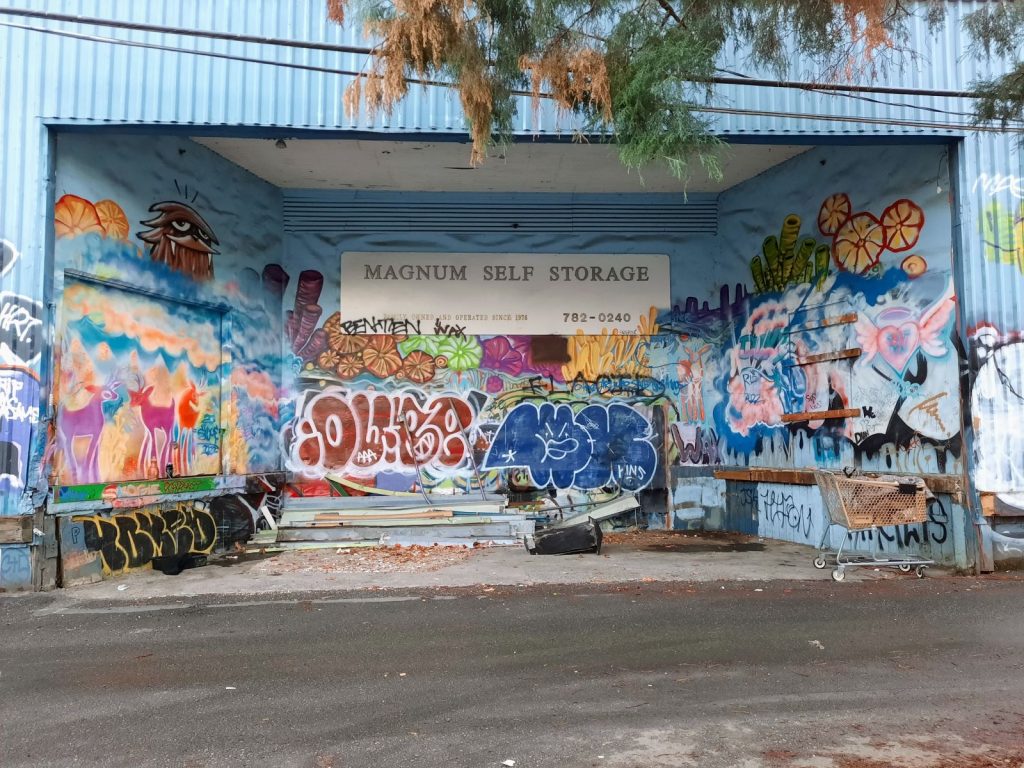
Also under this pillar, Harrell’s desire to “improve interdepartmental coordination” actually means bringing graffiti abatement under the purview of his Unified Care Team, the interdepartmental task force tasked with cleaning and sweeping homeless encampments. The proposed budgets for Seattle Parks and Recreation, Seattle Public Utilities (SPU), Seattle Department of Transportation (SDOT), and the Human Services Department (HSD) all include the same line: “the proposed budget includes new funding to operationalize a coordinated Unified Care Team/Clean Seattle pilot program.”
This new Unified Care Team/Clean Seattle program has a scope larger than graffiti, but its funding is indicative of the mayor’s focus on cleaning the city, especially contrasted with budget cuts in other areas.
Parks’ increase of $5.4 million is intended to “operationalize” the Unified Care Team/Clean Seattle program. $3.3 million of this is dedicated to hiring 30 new full time employees, whose duties include cleaning and maintenance, and would “increase the City’s capacity to do encampment clean-ups” according to a memo accompanying a presentation to the city council’s budget committee.
SDOT’s Clean Seattle contribution is $3.6 million, and would hire 18 new full time workers. These would be responsible for cleaning the city’s rights of way, including roads, bike paths, and any theoretical pedestrian zones.
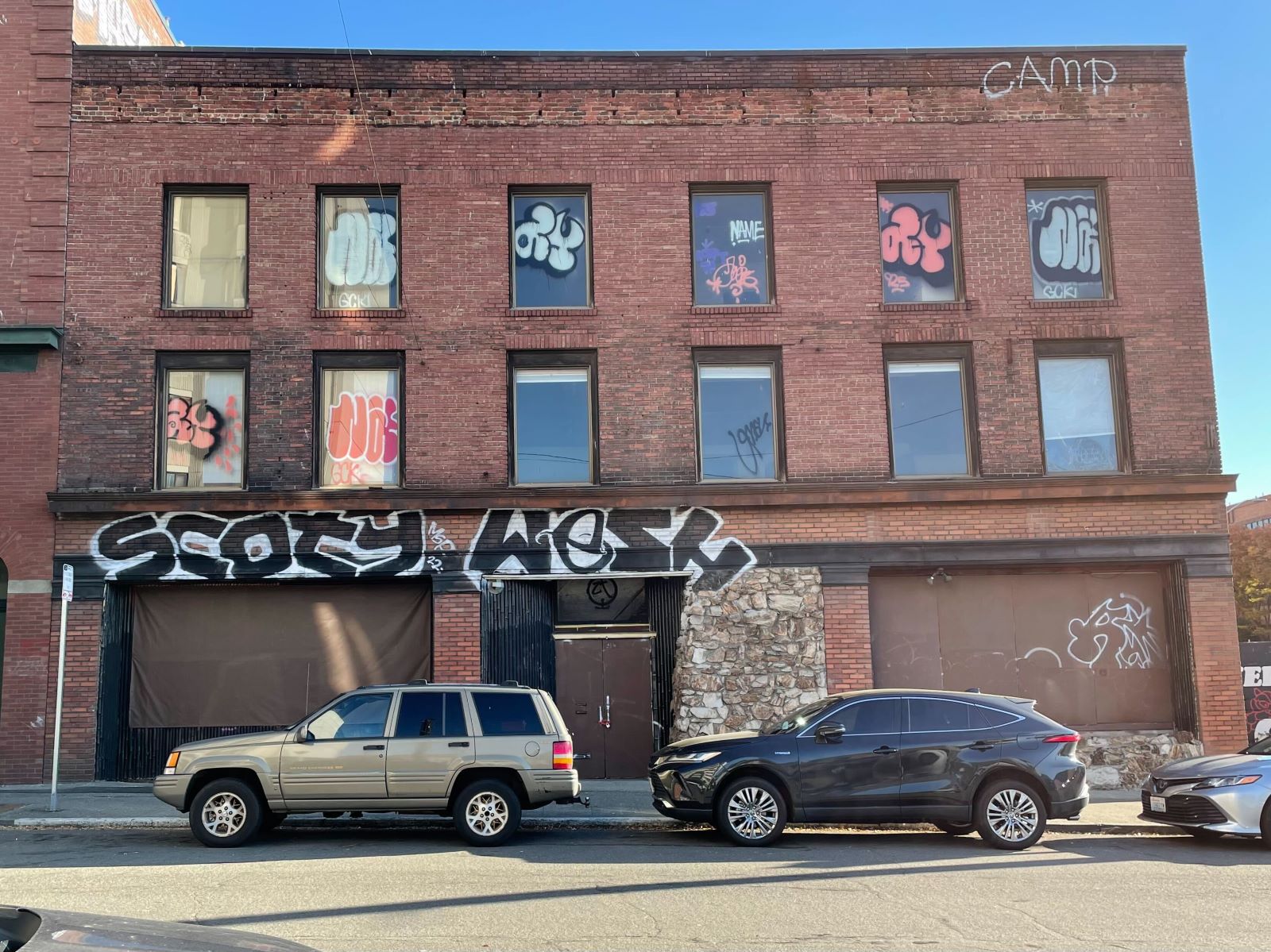
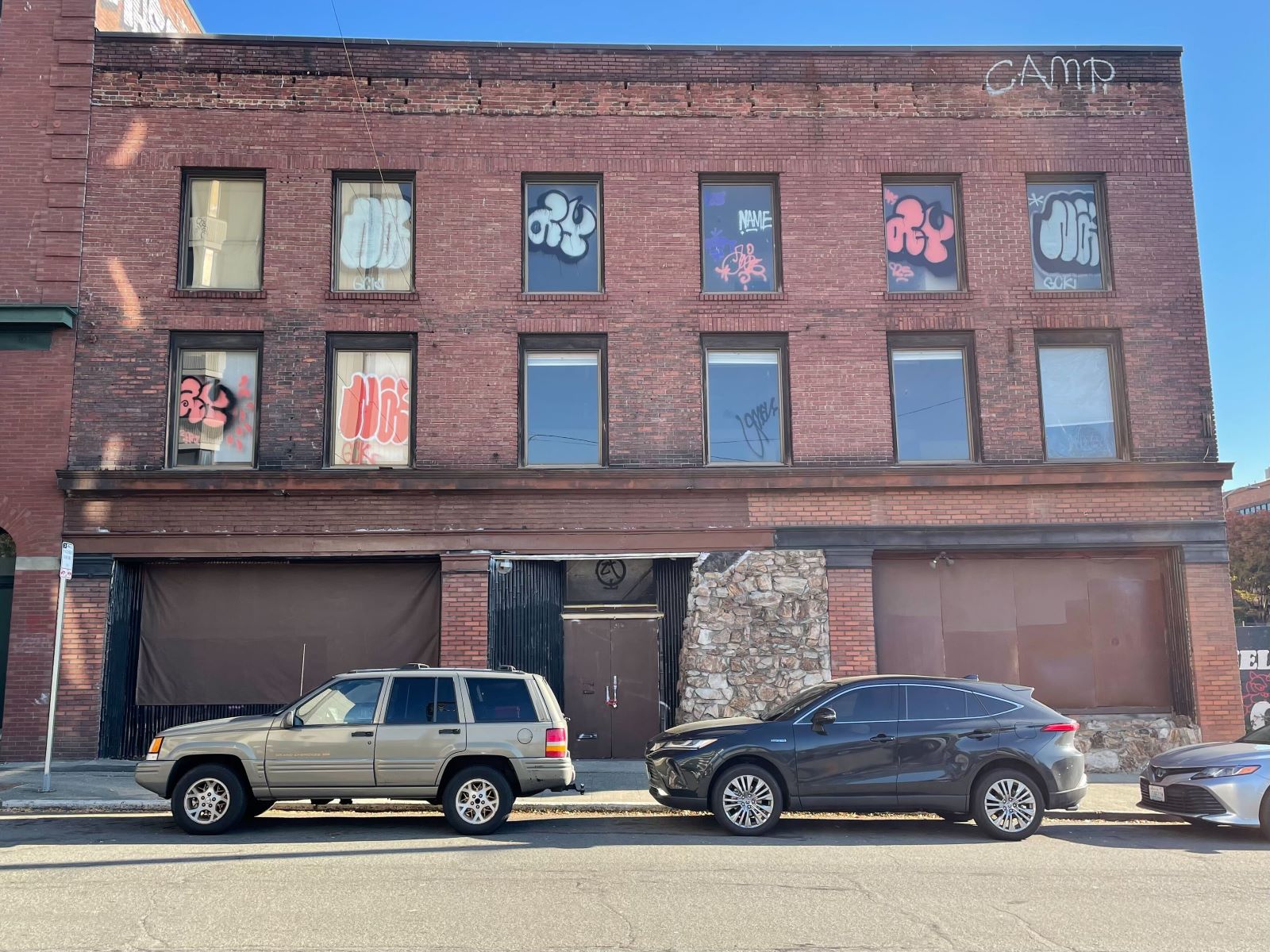
HSD’s increase is less than $1 million, and would add six new full time workers. These workers do not abate graffiti, but are the city employees tasked with offering housing to those experiencing homelessness.
SPU’s proposed $1.2 million increase was to be the linchpin in this coordinated program. The mayor’s office intends the graffiti executive to act as the “single point of contact at the City designated to lead graffiti efforts and will be responsible for establishing standard graffiti tracking metrics and abatement procedures,” according to the budget memo.
The mayor’s office did not respond when asked how the council’s rejection of funding for the executive position would affect the overall program.
So, what do these numbers mean? Funding for the Unified Care Team/Clean Seattle program provides $6.9 million for hiring 48 new workers whose purview includes graffiti abatement, though most of them will likely never do any work relating to graffiti. All told, the number of workers dedicated to graffiti abatement is increasing by an unknown amount across departments, at a time when the city is in a budget shortfall.
The remaining pillars are much more straightforward.
The second pillar of the mayor’s proposal, increased assistance to private property owners affected by graffiti, was also kneecapped by the council. The two new SPU graffiti rangers were intended to interface directly with property owners, but the funding for those positions has been blocked.
The third pillar of the mayor’s proposal, the Many Hands Art Initiative, is not mentioned in the mayor’s proposed budget. However, the Office of Arts and Culture budget mentions a $1.5 million decrease for “Funding Programs & Partnership” over the next two years. Despite Mayor Harrell’s emphasis on creating city-sanctioned locations for street art, the Arts and Culture budget contains cuts across the board, in contrast to the abatement and enforcement areas of the City budget.
The plan also mentions increased support for volunteers, including handing out 1000 graffiti kits (which each cost $100). In addition to the $100,000 dedicated to kits, the city will train volunteers and plan new Days of Caring throughout the city, though cost information was not made available.
Mayor Harrell also mentioned increased enforcement of graffiti offenses.
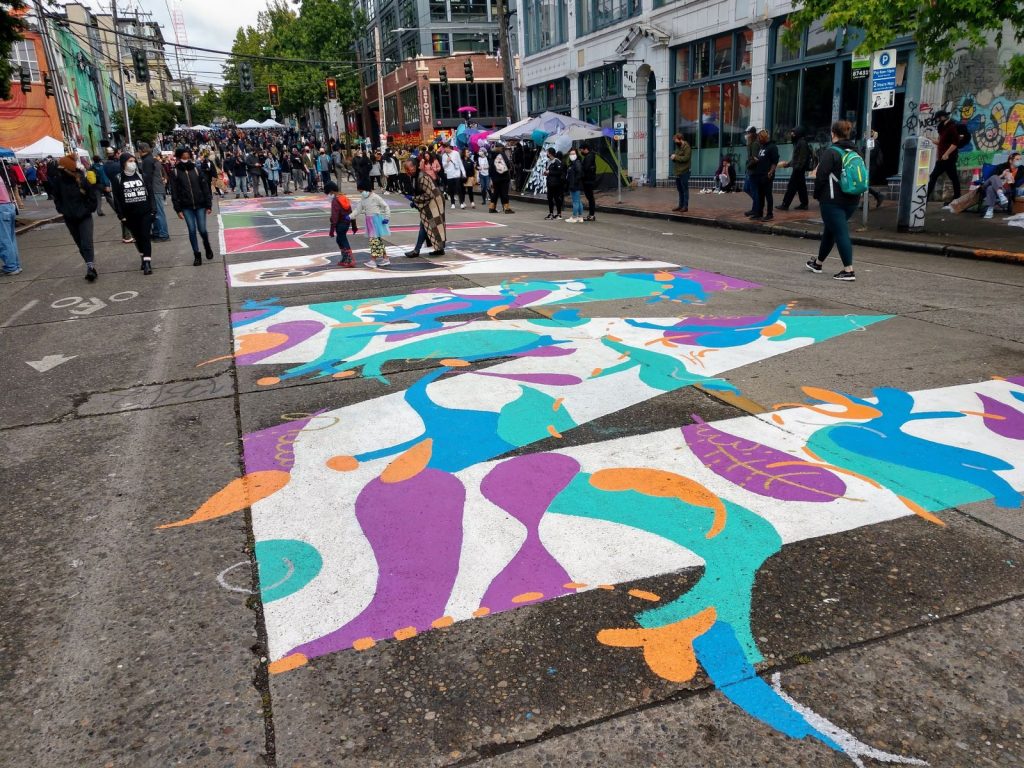
“We recognize that this is not a crime of violence,” Harrell said in reference to his bringing the Seattle Police Department (SPD) and the City Attorney’s Office in on the plan. “But we also recognize that we don’t want that kind of activity to occur on our walls.”
There was no estimate given for the cost of increased enforcement. When pressed to provide evidence for the link between graffiti and crime, Mayor Harrell cited “broken windows” theory – a controversial approach to reducing crime by cracking down on petty crimes like graffiti.
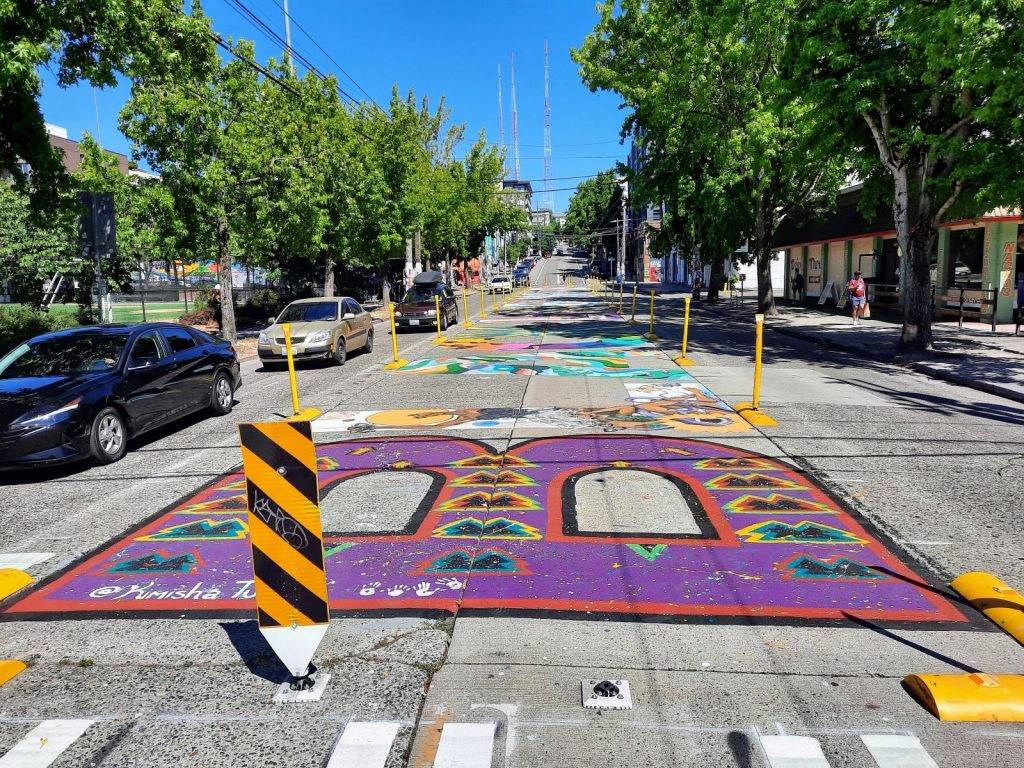
SCC Insight’s Kevin Schofield analyzed broken windows theory in the context of Seattle’s previous mayor, Jenny Durkan. Schofield concludes that Seattle should stop focusing on costly, short-term and cosmetic patches.
Lastly, the plan includes continued collaboration with the the Washington State Department of Transportation (WSDOT). Funding for this is presumably part of the $6.9 million dedicated to the Unified Care Team/Clean Seattle program, which improves coordination between governmental entities.
Conspicuously absent from the plan, but found in the mayor’s proposed budget, is Seattle Parks’ new response team for vandalism and graffiti abatement. The Parks budget asks for more than $632,000 for a new team of five “painters and installation maintenance workers” whose mandate includes abating graffiti and maintenance of Seattle’s parks. This new team was not mentioned in the mayor’s announcement, perhaps because creating a new team goes against the mayor’s goals of centralizing and streamlining graffiti abatement.
These items add up to over $732,000 for a new team of parks workers and the cost of 1000 new graffiti kits, plus an unknown portion of the $6.9 million dedicated to the Unified Care Team/Clean Seattle program. Not including the unknown costs of volunteer training, increased anti-graffiti enforcement, and vaguely defined art initiatives. The mayor’s office’s estimate of $944,000 was a clear undercount before the $1.2 million cut from the city council, and after the cut it’s still a stretch.
In the context of the city council’s scramble to balance an additional $82 million budget hole revealed just weeks before the final vote, this funding raises the simple question: is graffiti abatement worth it?
When arguing in favor of maintaining the $1.2 million increase, Councilmember Sara Nelson maintained that she receives “a lot of emails from people across the city complaining about graffiti as their number one issue.”
It’s true that, according to SPU’s Clean City Division director Lee Momon, the city has seen a spike in reported graffiti since the pandemic.
On a tag-along with SPU’s Graffiti Rangers, Lee talked about working through their reporting backlog. He says the 2020 lockdown and uprising created the perfect environment for increased graffiti, and everyone leaving lockdown simultaneously caused graffiti reports to spike.
“I know, looking around town, it can seem like we don’t get to everything,” Momon admitted. “But we do.”
Mayor Harrell announced the plan in front of a mural of Martin Luther King Jr., which was tagged with graffiti and subsequently restored earlier this year. His speech repeatedly referenced the mural.
Harrell’s post announcing the plan also included several quotes from Seattle community leaders, including a particularly heartfelt one from Rabbi Will Berkovitz, the CEO of Jewish Family Service Seattle:
“Days after I wrote an op-ed about the rise of hate against the Jewish community, a week after a gunman took Jewish people hostage in a synagogue in Texas, antisemitic graffiti appeared across the street from our building on Capitol Hill, blocks from one of the largest synagogues in our city: Temple De Hirsch Sinai. The City took swift action and immediately removed the graffiti, reducing the potential of any further hate speech or violence. Sadly, we are living in a time when hateful acts and violence are rising against historically marginalized communities. We are extremely grateful to Mayor Harrell and his commitment to addressing the surge in vandalism around Seattle especially when these acts include hate speech.”
Rabbi Berkovitz draws a link between the very real problem of antisemitic rhetoric and violence in the United States, and Seattle’s graffiti. Together with the Martin Luther King Jr. mural, Harrell is framing graffiti as a threat to public safety and civil rights.
When asked about hateful graffiti, Lee was adamant:
“Within 24 hours, we get all of it.”
Harrell’s own announcement page brags that the city “cleaned up 100% of racist, sexist, or obscene graffiti within 24 hours of it being reported in 2021.” This is a great track record, but suggests that more funding is not necessary to combat hateful graffiti.
When pressed on how graffiti was linked to public safety, Harrell conceded that he does not have much data, but pushed back on the need for data in the first place:
“I don’t know if I need data to suggest that. I think we have lived experience that would suggest that, and at some point lived experience will almost prevail over hard data.”
After Rabbi Berkovitz’s powerful quote, the mayor’s announcement touts quotes from the executive director of the Sodo Business Improvement Area, a program manager at Capitol Hill Business Alliance, and the executive director of the Ballard Alliance (Ballard’s Chamber of Commerce). The mayor’s proposed subsidizing for private business owners dealing with graffiti aligns with local business interests.
When asked to clarify the differences between graffiti, art, and vandalism, Harrell demurred.
“I might pass on that question, because art, as we all know, is in the eye of the beholder.”
“However, I’ve seen what some may call graffiti that actually looks really nice,” Harrell added. “The question becomes, perhaps with the state’s approval, are there areas in the city where we can have art?”
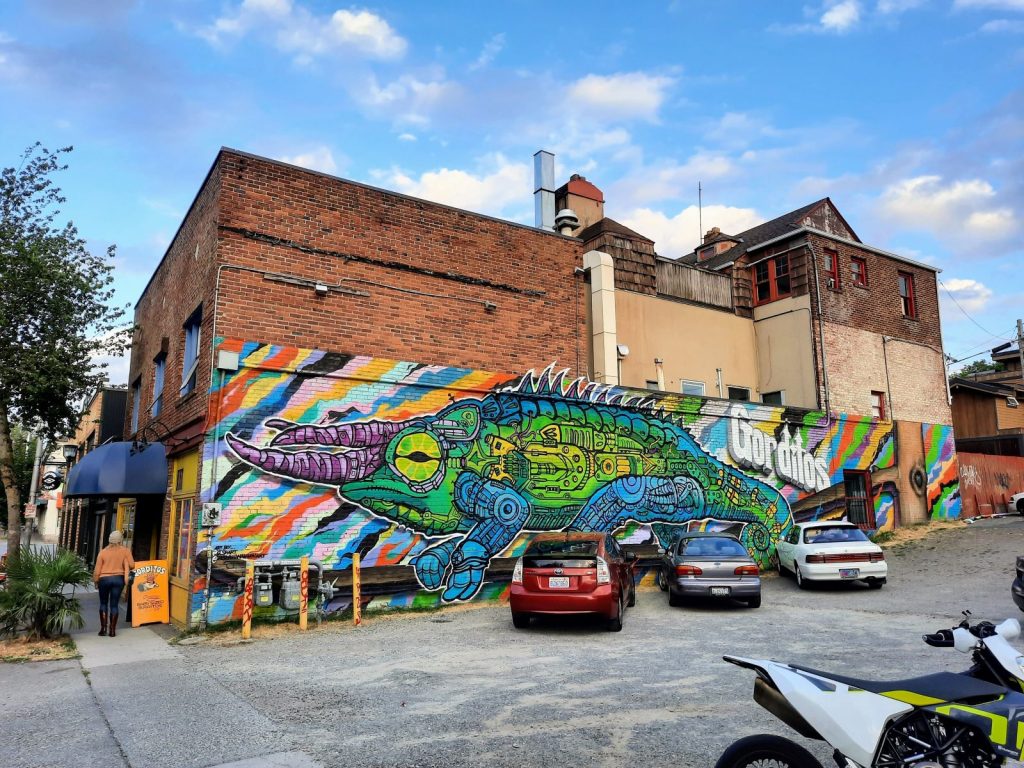
The mayor’s proposed budget for the Office of Arts and Culture shows a decrease of about $0.5 million in 2023, and another decrease of $1 million in 2024, in funding for arts and cultural programs.
His budget allocates less than $1 million for new employees who offer housing to Seattleites experiencing homelessness. But it adds nearly $7 million for new workers to clean graffiti, litter, and sweep homeless encampments.
Whether these numbers make it through Monday’s final budget vote will determine, just as much as their blocking of the Graffiti Rangers’ $1.2 million, if the city council shares the mayor’s prioritization of graffiti enforcement and abatement.
Pitch an article – This article was funded by The Urbanist’s freelance program. Freelance reporters: we’d love to work with you. Send us a pitch at editor [at] theurbanist.org.

